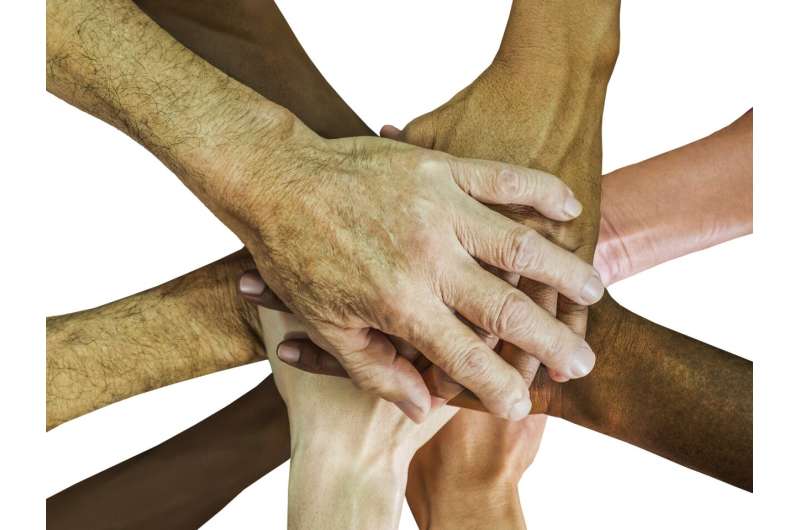Diverse teams can improve engineering outcomes, but recent affirmative action decision may hinder diversity efforts

It may seem intuitive that teams made up of people with a diversity of perspectives, experiences and backgrounds lead to more effective and inclusive outcomes. But the recent U.S. Supreme Court decision to curb affirmative action in higher education could hinder progress toward increasing diversity in the science and engineering fields.
As a geographer and feminist scholar, my work centers on how diverse engineering teams can create space for better collaborations and outcomes. The first step to creating diverse teams is having diverse people with relevant engineering backgrounds, but this Supreme Court decision may create more roadblocks for people from underrepresented backgrounds pursuing the sciences.
Affirmative action
Affirmative action is the practice of universities giving special consideration to historically excluded groups, such as racial minorities and women. In addition to addressing past discrimination, the practice, born out of the 1960s civil rights movement, ensures public institutions such as universities represent the populations they serve.
Even with affirmative action, Black and Hispanic workers are already underrepresented in STEM fields. A 2021 study found they made up only 9% and 8%, respectively, of the total STEM workforce in the United States. At the same time, Black people and Hispanic people accounted for 14% and 19%, respectively, of the national population.
Even prior to the court's decision, higher education pipelines underrepresented women and people of color in engineering.
Engineering offers high salaries and job stability, but it also lags far behind other STEM fields in integrating diversity and creating inclusive company cultures. Diverse teams can help make sure a company's products and services are relatable to a wide range of customers.
A pipeline issue in engineering
Still, it is challenging to create genuinely inclusive cultures. And to have diverse engineers, you first need diverse engineering students.
A diverse engineering team has historically been one that includes different talents—engineers, but also designers, architects and so on. However, now when experts like me point out a pipeline issue in engineering, we're prioritizing social diversity. This includes gender, race, ethnicity, nationality and other identities.
The percentage of engineering bachelor's degrees awarded to women and people of color in the United States has grown little since 1998. Women account for 22% of bachelor's degrees in engineering. Less than 4% of all engineering degrees went to African American, Hispanic and Native American women. Hispanic and Black/African American students account for 11.4% and 4.2% of engineering bachelor's degrees, respectively.
Students cite hostile climates and racist and sexist stereotyping as reasons for leaving the major.
Diverse teams in practice
Despite these challenges, a year ago I joined three senior women guiding an intergenerational, diverse group of engineering researchers from the Georgia Institute of Technology and Penn State University.
The exceptionality of our project's all-female engineering leadership offers a rare on-the-ground opportunity to evaluate how diverse engineering teams can enhance innovation and teamwork. Our early study findings—which have not yet been peer-reviewed—suggest that a diverse team creates a place for an array of opinions and strategies to flourish.
Compared with experiences with mostly homogeneous groups, members of this multigenerational team reported less hierarchy in group discussions, stronger self-assurance and a sense of solidarity and shared vision. Senior members fostered belonging, while early career members felt mentored and supported.
For example, our project focuses on designing customized pediatric masks and other medical devices. The members of this team reported feeling that their peers all shared a drive to improve quality of life for patients.
Diverse engineering teams bring a range of problem-solving skills together, which leads to more creative outcomes. In teams where members have a variety of backgrounds, perspectives and experiences, experts see more collaboration, productivity and a focus on socially beneficial outcomes.
Allowing all team members to contribute equally results in higher productivity, boosts retention rates and creates smoother interactions. All this results in faster, more effective problem solving.
Homogeneous or non-diverse teams are more likely to experience groupthink. During groupthink, members lapse into consensus thinking and agree with each other rather than bringing more ideas forward. Groupthink happens more often when stakes are high or there's uncertainty.
On the other hand, diverse teams tend to focus more on facts and may process them more carefully than homogeneous teams. This is due to the diversity of different experiences that accompanies diverse workplaces. Carefully processing all the facts and considering multiple points of view can provide safer, more inclusive outcomes.
Diversity in human judgment, empathy and creativity is good for business, but it also benefits the common good. Creating opportunities for students from diverse backgrounds and experiences prepares all students—regardless of race or gender—for success in an increasingly diverse nation.
This article is republished from The Conversation under a Creative Commons license. Read the original article.![]()
No comments:
Post a Comment